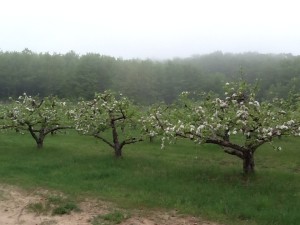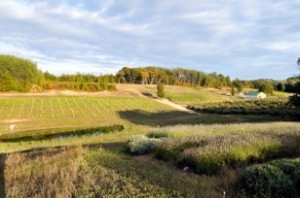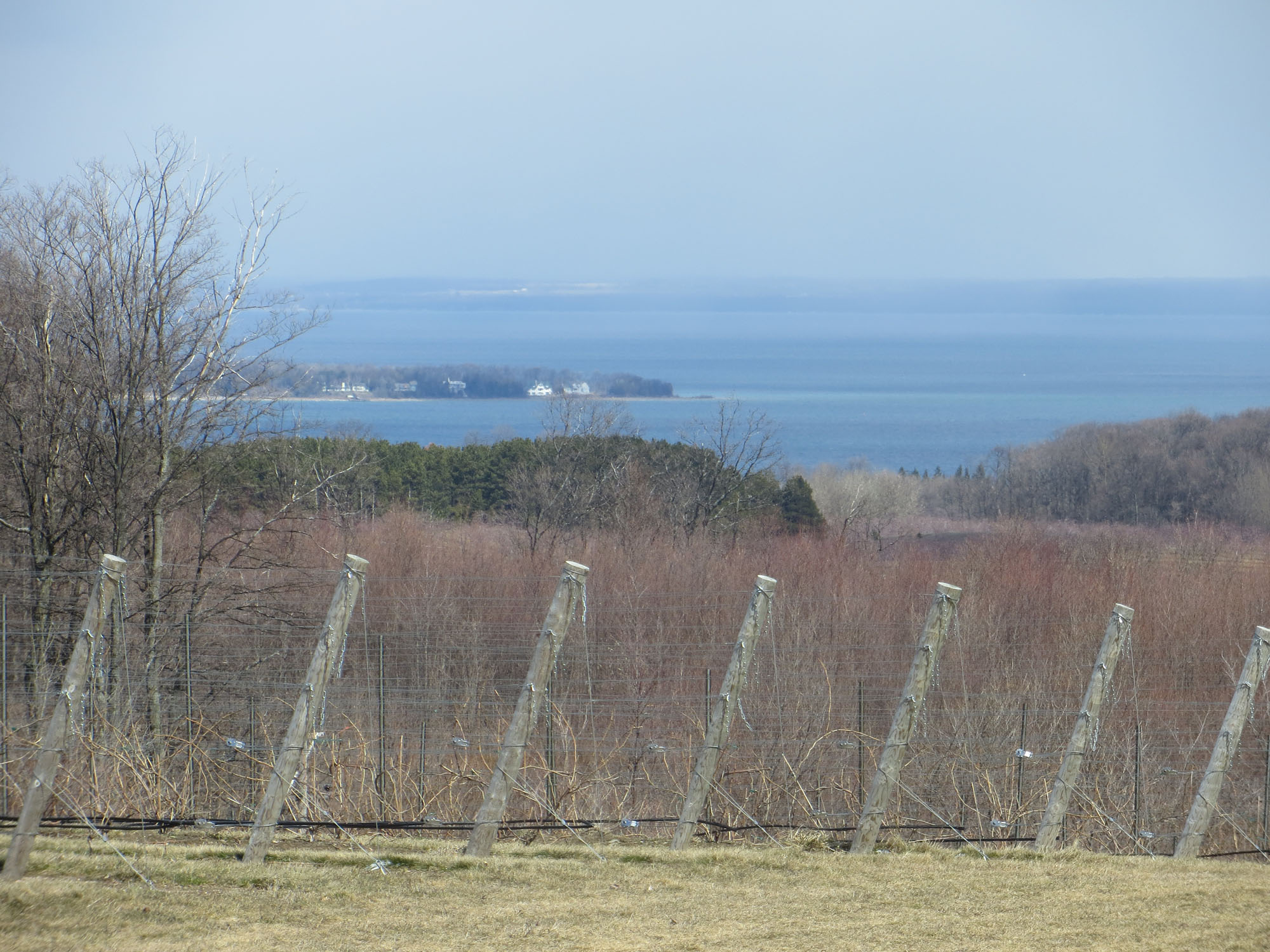Sustainable Suggestions From Michigan’s Good Neighbor Winery
During 2012, Midwest Wine Press went looking for organic grape growers (See: Growing Organic Grapes in the Midwest) and found a few Midwestern vignerons who meet the strict USDA Organic certification requirements.
Since then, we’ve heard from a number of wineries that grow grapes using various “sustainable” methods. One winery in Northern Michigan, Good Neighbor Organic Vineyard and Winery, has made “low impact” grape growing their specialty.
Although, Good Neighbor is not USDA Organic, it is certified by Ecocert, one of more than 50 organic certification companies operating in the United States. Ecocert is in turn “certified” by the USDA to review, inspect and approve organic producers. However, this does not mean that Ecocert certified growers necessarily meet all USDA Organic requirements. Ecocert has its own organic certification- like the one Good Neighbor earned- that starts with the farmer completing a 23 page “Organic Farm System Plan” and then agreeing to periodic on-site inspections.
Stan Silverman, managing member of Good Neighbor, makes several estate grown white wines, including Gewürztraminer, Pinot Gris and Chardonnay, using organic farming techniques. He also makes an estate grown red, Noiret. Silverman said that Noiret grows well on his low-lying property in the center of the Leelanau Peninsula.
Noiret, a deep, rich red wine, was bred by Cornell University during the ’70’s. One big plus for Noiret for environmentally conscious growers is that the grape has an early veraison. Noiret’s early maturation counters problems with getting red grapes to fully ripen in Northern Michigan, Silverman said . An earlier harvest also means less time for plant diseases and insects to get established. The portion of the Noiret crop that winds up inside birds, raccoons and deer is reduced too.
Noiret is less susceptible to powdery mildew, black rot and botrytis (black rot) than most other wine grapes, according to Lisa Smiley’s 2008 profile.
Weeds and insects do present difficulties for Midwestern grape growers, but the biggest problem in the Midwest is spores. “Fungal infections are the tough one to combat without chemicals, but we have tools at our disposal, ” Silverman said. “First we plant our rows wider than most, this helps greatly with airflow, plus I’m a terrible tractor driver. Wider rows also mean less shade on the plants which is good for curtailing molds and fungus.”
Bacillus subtilis, marketed commericially by Bayer CropScience under the brand name Serenade®, is effective against fungal infections, including downy mildew, Silverman said. Serenade contains live non-pathogenic bacteria, not man-made chemical compounds. Essentially, the bacteria in Serenade create their own natural fungicides. One group of chemicals produced by the bacteria- lipopeptides- punch thousands of holes in the fungal spore’s cells, killing the fungus.
Anthracnose fungus “can be particularly difficult” to combat organically, Silverman said. He uses Kaligreen (potassium bicarbonate) for this common plant disease. According to the manufacturer, Kaligreen can also be used for powdery mildew. Direct contact with the fungus is absolutely necessary for control, according to Kaligreen.
In Silverman’s book, organic grape growing is more than a compilation of techniques, it’s a philosophy. “You have to understand the organic remedies do not work as well as chemicals. That’s why you have to be pro-active,” he said. “With organic farming, your spray program cannot be scheduled on a calendar, you have to attack the problem right when it starts.”
Information concerning organic orchards is still easier to find than information about growing organic grapes, Silverman said. He recommends Michgan State University’s “New Fungicide Chemistries for Grapes” as a good resource.

Sometimes the best solutions come from unlikely places. Neem Oil- an ancient botanical pesticide derived from Indian Neem tree- works as both an insecticide and a fungicide, Silverman said. Neem Oil is “not highly toxic to mammals” according to Colorado State University, but bugs naturally avoid it. Silverman said Neem Oil is a good way to dissuade rose chafers. “The stuff smells so bad that even bugs don’t like it,” he said.
Silverman said he has not had much success with Pyrethrum for insect control. He added that the primary drawback of Pyrethrum, which is derived from Chrysanthemums, is that it must be applied at night. John Buenneke of MGK, a producer of insect control products based in Minneapolis, said that pyrethrins do break down in sunlight so they should be applied in the evening or at night. Buenneke said evening and nighttime Pyrethrum application also helps to reduce the impact on beneficial insects.
Pheromone interrupters don’t work as well for grapes as they do for fruit trees, according to Silverman. “You have to hang a pheromone trap on every apple tree to keep insects from reproducing, and it’s not practical for a vineyard,” he said.
For pests only, Silverman believes that elemental sulfur is coming back into favor after being used in agriculture for 3,000 years. (Elemental sulfur is simply mined, pulverized sulfur.) Fortunately, the Leelanau Peninsula does not have the hot weather that can sometimes result in plant injury from sulfur.
Silverman uses no herbicides. Instead, he uses wood chip mulch to suppress weeds. “Don’t use fresh wood chips however,” Silverman cautions, “because they will pull the nitrogen right out of the soil. Let the wood chips partially decompose, then put them between your rows.”
All the sustainable Midwestern grape growers who Midwest Wine Press has spoken with, including Good Neighbor’s Silverman, have decided to go take a more challenging approach to farming based on a conviction that it’s the right thing to do. “Growing grapes is about taking what nature gives you,” Silverman said. “Birds are the perfect example. Sometimes at dawn, we see 15 species of birds on our farm; people are amazed when they come here and see what wildlife is like in a natural agricultural environment.”
See Related Story: Growing Organic Wine Grapes in the Midwest
[wp_geo_map]



